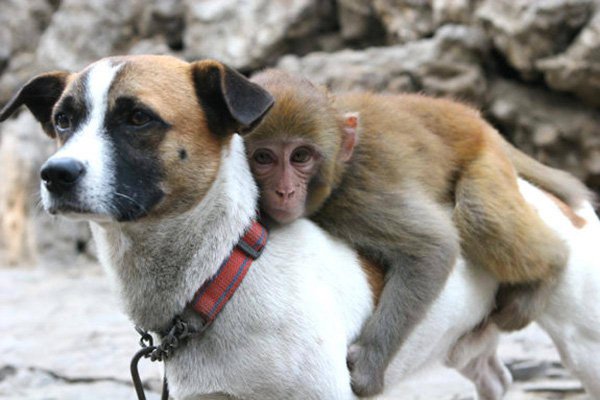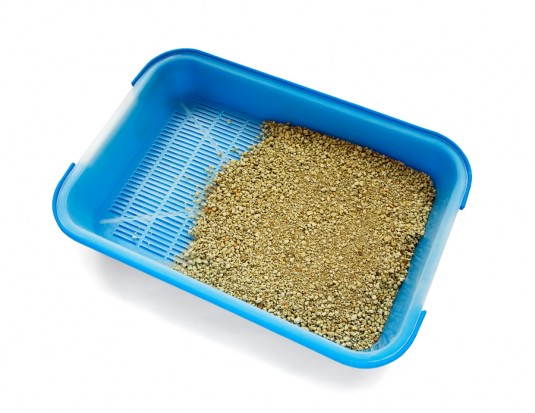
If the dog you loved so much was injured and bleeding, would you know what to do? Would you know what to look for if he were bleeding internally? Yes, the sight of blood makes some of us queasy, but there comes a time when you have to put your own comfort aside if you are going to save a life. Sometimes there isn't any time to think and you have to react quickly. There are two types of bleeding; external and internal. External bleeding is the result of a wound to the surface of the body like a cut or a scratch. Internal bleeding is when the inside of the body is suffering from a wound that is bleeding into the body.
External bleeding is the easiest to notice. Generally, you'll need to stop the flow of blood from the wound to prevent excessive blood loss and possible shock. In most situations, applying firm and steady pressure to the wound is enough to slow the flow of blood to give a dog a chance of survival. An easy way to apply pressure properly is to cover the wound with a thick cloth or gauze bandage while using a hand to press the bandage to the area. When the cloth over the wound soaks up too much blood, don't remove it, but instead apply a new one on top of the old one. Under no conditions should you try to wipe away blood that's welled up over the wound. Excess blood is in the process of forming a clot that will naturally stop the wound from bleeding. The application of a bandage won't hinder the clotting process but wiping the blood away will.
If a simple bandage doesn't do the job to slow bleeding, try elevating the open wound if the dog was hurt on a limb. A pillow, rolled-up blanket, or a cushion placed between a dog's legs can all be used to elevate a wounded limb, but raise only slightly before applying direct pressure to the wound. However, if there's a chance that a bone might be broken, elevating a wound is a very serious mistake.
Should direct pressure and elevation fail to slow the flow of blood after one to two minutes or be an option to avoid (in the case of a possible bone fracture), you should consider applying pressure to a pressure point (points of the body where major arteries are close enough to the skin's surface to be touched). There are nine such pressure points on a dog's body: Four pairs in the legs and a fifth in the tail. The first pair are on the front legs of the dog, inside the upper area immediately above the elbow. The second pair of pressure points is in the back legs of the dog, inside the thigh at the spot where the leg meets the body. The third pair is in the front feet of the dog, inside the lower leg and just above the paw. The fourth pair is in the back foot, at the front of the back leg just above the paw. The final pressure point is on the underside of the tail.
The use of a tourniquet should be a last resort, used only if all of the methods listed above fail. Even then, a tourniquet should be used with the utmost care to avoid stopping the flow of blood to a limb entirely. Any strip of cloth or gauze (though elastic bands or drawstrings may also be used if necessary) can be used as a tourniquet. Tourniquets are tied above the wound and tightened by hand, but they should be released every 10 to 15 minutes to allow some blood to flow into the limb.
Internal bleeding is much, much trickier to detect. Whenever a dog suffers excessive physical trauma but no blood is seen, the dog should still be examined by a veterinarian for internal bleeding. Shock can also result from internal bleeding, so look for rapid but weakened breathing, cold extremities, and a rapid but weak heartbeat, as they're all signs of shock.
As with all serious injuries, you should seek out professional help immediately, especially if you suspect broken bones, internal bleeding or if there's something stuck in the wound. First aid is only a temporary solution to stabilize the situation until a veterinarian can apply proper treatment. By doing what you can before the professionals arrive, you are giving your dog a fighting chance to survive.
 The best and unique dog care services available online
The best and unique dog care services available online
The best and unique dog care services available online
The best and unique dog care services available online
 Hire Professional Pet Grooming Manitoba for Special Treatments
Hire Professional Pet Grooming Manitoba for Special Treatm
Hire Professional Pet Grooming Manitoba for Special Treatments
Hire Professional Pet Grooming Manitoba for Special Treatm
 Which Cat Litter?
Which Cat Litter?
Which Cat Litter?
Which Cat Litter?
 Atopic Dermatitis In Dogs
Atopic Dermatitis
Atopic Dermatitis In Dogs
Atopic Dermatitis
 Ten Ways To Make Your Dog Happy And Healthy
Ten Ways To Make
Ten Ways To Make Your Dog Happy And Healthy
Ten Ways To Make
Copyright © 2005-2016 Pet Information All Rights Reserved
Contact us: www162date@outlook.com